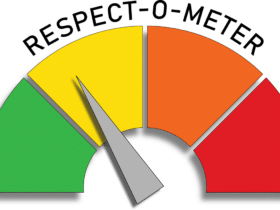Learning how to track energy is one of the most powerful habits for enhancing overall wellbeing, productivity, and self-awareness.
In a world where busy schedules, constant connectivity, and stress are the norm, it’s easy to overlook the core of what keeps us going: our energy. Unlike utility bills or battery levels, our energy levels—physical, emotional, and mental—fluctuate as we navigate daily life.

By recognizing when you’re at your most energized, when you need to recharge, and what drains you the most, you take control rather than letting life dictate your pace. In this guide, we’ll walk through six essential steps to monitor physical energy, understand emotional and mental patterns, and use actionable tools—from journals to wearable energy trackers—to transform your vitality.
6 Steps: How To Track Energy
Personal energy is multifaceted. To track personal energy effectively, it’s vital to recognize its three main types:
- Physical energy: Stamina, strength, and ability to move without fatigue. Influenced by sleep, exercise, nutrition, hydration, and illness.
- Emotional energy: Mood, motivation, resilience, ability to deal with stress and relationships. Affected by social interactions, thoughts, and self-talk.
- Mental energy: Focus, clarity, creativity, memory, and decision-making. Tied to rest, stimulation, mental workload, and emotional state.
These three types are interconnected—poor sleep (physical) lowers patience (emotional) and clouds thinking (mental). Conversely, feeling happy (emotional) can reduce fatigue (physical) and boost creativity (mental).
Tracking your energy levels in all three categories offers a holistic view and avoids the mistake of treating yourself as a machine with only one type of “fuel.”
1. Step One: Start Energy Journaling
At the core of any attempt to track personal energy is paying attention. The simplest and most powerful tool? An energy journal.
What is energy journaling?
It’s the practice of recording your perceptions, habits, and feelings about your energy throughout the day.
How to begin:
- Choose a notebook, spreadsheet, or digital note app.
- At regular intervals (morning, midday, evening; or every 2–3 hours) jot down:
- Physical energy (1–10): “How energized does my body feel?”
- Emotional energy (1–10): “How positive, motivated, or resilient do I feel?”
- Mental energy (1–10): “How clear, focused, or creative is my mind?”
- Note context (sleep quality, meals, stress, activities).
- Collect 1–2 weeks of entries for patterns.
Sample entry:
| Time | Physical | Emotional | Mental | Notes |
|---|---|---|---|---|
| 8 AM | 7 | 6 | 8 | Good sleep, strong coffee, motivated for day |
Journaling works because it forces reflection, making invisible states (energy patterns, mood changes) visible. Doing this consistently helps you monitor physical energy, track mental fluctuations, and begin understanding what really drives your wellbeing. It lays the groundwork for all other strategies.
2. Step Two: Leverage Wearable Energy Trackers and Apps
Technology can make it much easier to track personal energy objectively. Today’s wearables (such as the Fitbit, Apple Watch, Oura Ring, Garmin devices) and smartphone apps go beyond steps—they track sleep quality, heart rate variability, movement, even stress markers.
Key tools:
- Sleep tracking: Monitoring duration and quality. Apps like Sleep Cycle or wearable energy trackers reveal how rest impacts next-day energy levels.
- Step counters and exercise monitors: Track daily movement for insights into physical vitality.
- Heart rate variability (HRV): A proven marker of recovery and readiness, HRV rises with good rest and lowers with overexertion or stress.
- Mood & stress apps: Digital diaries that prompt you to rate emotional energy and moods (Daylio, Moodpath, Reflectly).
How to use technology wisely:
- Set automatic reminders for journal entries or check-ins.
- Compare device data with journal ratings—do they match your feelings?
- Use app reports to spot trends: low sleep correlating with impatience, high movement with better focus, etc.
Wearable energy trackers offer objective complement to your subjective journaling, reinforcing your intuition and highlighting blind spots. Used together, you can monitor physical energy and emotional/mental swings with greater precision.
3. Step Three: Map Energy Patterns Over Time
One-off ratings aren’t enough. The real power in learning to track personal energy comes from identifying long-term patterns. Energy isn’t static—it ebbs and flows.
Ways to map energy patterns:
- Weekly Review: At the end of each week, review your journal and device data. Note when your energy peaks and slumps.
- Chronotype tracking: Are you a morning bird or night owl? Studies suggest genetic predispositions for peak alertness—knowing yours can optimize routines.
- Daily cycles: Physical, emotional, and mental energy all peak at different times. Notice if you’re mentally sharpest before lunch, physically slowest after meetings, or emotionally vulnerable in evenings.
- Context mapping: Link slumps or peaks to sleep, food, stress, social interaction, workload, or other influences.
Example approach:
If you notice your mental energy always dips at 3 PM, experiment with an afternoon walk, snack, or brief meditation. Mapping patterns makes cause and effect visible, a foundational skill in maintaining and boosting energy.

Effective energy mapping allows you to proactively boost energy during slumps and harness natural peaks for demanding tasks.
4. Step Four: Analyze and Use Your Energy Insights
Tracking is a foundation; making changes is the structure you build upon it. After journaling, using wearable energy trackers, and mapping patterns, apply your findings.
Analysis process:
- Spot triggers and drains: What consistently improves or reduces your energy levels? For example, stress after meetings, poor sleep, heavy lunches, or inspiring conversations.
- Rank activities & habits: Are morning workouts energizing or exhausting? Does social media scroll help or hinder emotional energy?
- Test small tweaks: Change one habit at a time—earlier bedtime, 15 minutes of sunlight, swapping coffee for tea, brief stretching. Note effects in subsequent entries.
- Track results: Did physical, emotional, or mental scores improve? Are you more resilient, less fatigued, or mentally sharper?
Practical changes depend on your findings. Common recommendations include:
- Physical energy: Better sleep hygiene, nutritious meals, hydration, regular movement, and rest days.
- Emotional energy: Mindfulness practices, limiting toxic relationships, gratitude journaling, therapy, positive social interaction.
- Mental energy: Focused work sessions, breaks, minimizing distractions, brain exercises, pursuing learning.
Share insights with close friends, family, or a coach for support and accountability. The ultimate goal is not perfection, but a steady upward trend in overall wellbeing, which comes from intentional, personalized adjustments.
5. Step Five: Avoid Common Mistakes When Tracking Energy
Just as with any self-improvement effort, pitfalls exist in energy tracking. Here’s how to sidestep them:
- Judging fluctuations as failure: Energy naturally rises and falls. Treat low days as information, not personal shortcomings.
- Tracking only “down” moments: Remember to record highs—celebrate vibrancy, don’t just note depletion.
- Getting lost in data: If you obsess over numbers, you may ignore your intuition. Data is a tool, not the whole story.
- Lack of consistency: Sporadic entries give incomplete insight. Aim for daily check-ins, or at least regular reviews.
- Forgetting context: Energy is influenced by external events—holidays, illness, life changes. Annotate accordingly.
Use energy journaling and trackers as guides rather than rigid rulers. The purpose is compassionate self-reflection and gradual improvement.
6. Step Six: Create an Ongoing Energy Ritual

Sustainable change comes from ritual, not resolution. To track personal energy long-term, establish habits you can maintain.
Ideas for ongoing rituals:
- Morning/Evening reflection: Two minutes at the start or end of day to rate your energy and jot context—a mindfulness practice in itself.
- Weekly energy review: Look for trends, new goals, or habits to try.
- Monthly reset: Test new routines, drop what doesn’t work, keep what does.
- Seasonal check-ins: Recognize how weather, work cycles, or life phases shift your patterns.
Pair your ritual with rewards—a special treat for consistent tracking, sharing progress with loved ones, or scheduling favorite activities during high-energy periods.
Bonus: The Interplay Between Energy, Productivity, and Happiness
Why does all this matter? Because tracking and understanding energy isn’t just about feeling awake—it touches every area of life.
- Productivity: When you know your peak energy levels, you can schedule demanding work (deep focus, creativity) for those times and save routine tasks for slumps.
- Relationships: Recognize times when you’re emotionally checked out; reschedule important conversations for times of high emotional energy.
- Health: Persistent low physical energy may hint at medical issues—tracking helps catch concerns early.
- Personal growth: Insights from energy journaling foster self-compassion, motivation, and a sense of control.
Ultimately, to boost energy is to boost the joy and accomplishment you experience daily.
Tools and Resources to Track Personal Energy
- Fitbit, Apple Watch, Oura Ring, Garmin – Wearable energy trackers for sleep, movement, HRV.
- Mood tracking apps: Daylio, Moodpath, Reflectly—emotion and stress journaling.
- Energy journaling templates: Printable charts (3x daily ratings/notes).
- Sleep Cycle, Calm, Headspace: Apps for sleep and mindfulness.
Experiment, find what suits your personality, and make tracking enjoyable—not a chore.
Quick Reference Table: Sample Daily Energy Journal
| Time | Physical | Emotional | Mental | Context |
|---|---|---|---|---|
| 7 AM | 6 | 5 | 7 | Slept well, sunny mood |
| 12 PM | 8 | 7 | 6 | Walk outside, good meal |
| 4 PM | 5 | 4 | 4 | Stressful meeting |
| 9 PM | 3 | 6 | 4 | Relaxing, winding down |
Repeat for several days/weeks to discover patterns and triggers.
Empowerment Through Energy Awareness
Learning to track personal energy is a transformative act—one that moves you from autopilot to conscious living. By understanding and monitoring physical energy, emotional shifts, and mental focus, you gain a map for scheduling, self-care, relationships, and growth.
The best method is the one you stick with: simple energy journaling, high-tech wearable energy trackers, or a blend of both. Rituals ensure consistency. Compassion ensures resilience and motivation.
There is no perfect energy state; there’s only progress. Fluctuations are feedback, not flaws. Invest in your awareness, celebrate your wins, and let energy tracking guide you toward greater wellbeing and fulfillment.


















